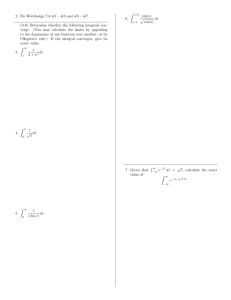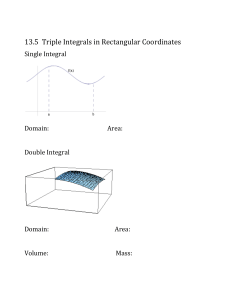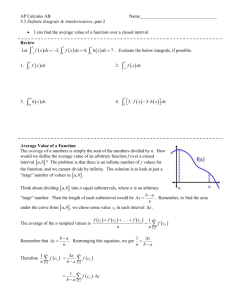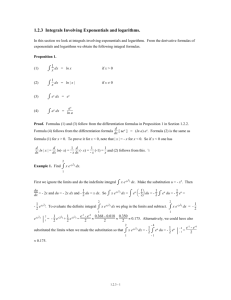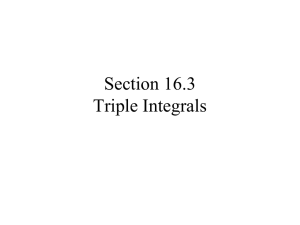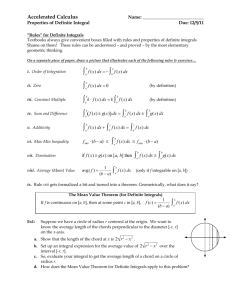Double integrals over rectangles.
advertisement
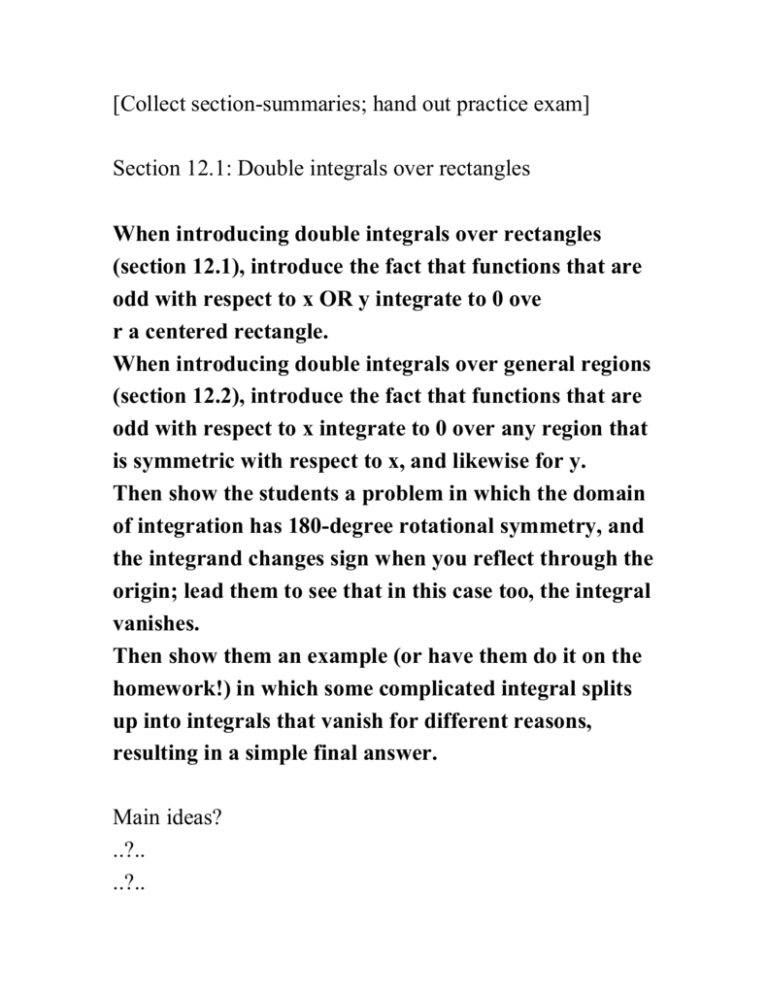
[Collect section-summaries; hand out practice exam] Section 12.1: Double integrals over rectangles When introducing double integrals over rectangles (section 12.1), introduce the fact that functions that are odd with respect to x OR y integrate to 0 ove r a centered rectangle. When introducing double integrals over general regions (section 12.2), introduce the fact that functions that are odd with respect to x integrate to 0 over any region that is symmetric with respect to x, and likewise for y. Then show the students a problem in which the domain of integration has 180-degree rotational symmetry, and the integrand changes sign when you reflect through the origin; lead them to see that in this case too, the integral vanishes. Then show them an example (or have them do it on the homework!) in which some complicated integral splits up into integrals that vanish for different reasons, resulting in a simple final answer. Main ideas? ..?.. ..?.. Definition of double integral as a limit of double Riemann sums Interpretation of double integral as (signed) volume Approximating volumes with sums (e.g., Midpoint Rule) Definition of integrability Integrability of continuous functions and “nearcontinuous” functions (jump discontinuities are okay, but infinite discontinuities can render a function nonintegrable) Iterated integrals (vs. double integrals) Separation of variables for special integrands Algebraic properties of double integrals [View “Fubini’s Theorem” animation] [Discuss the connection between the definition of volume given on page 372 and the definition of volume given on page 691 (formula 4).] If we estimate I = R x+y dA on the region R = [0,2] [0,2] using n=1 subdivisions on the x- and y-axes, and using an arbitrary sample-point, what’s the smallest estimate we can get? What’s the largest? ..?.. ..?.. Smallest is 0; largest is 16. If we estimate R x+y dA on the region [0,2] [0,2] using n=2 subdivisions on the x- and y-axes, and using an arbitrary sample-point, what’s the smallest estimate we can get? What’s the largest? ..?.. ..?.. Smallest is 0+1+1+2=4; largest is 2+3+3+4=12. So 4 ≤ I ≤ 12. Note that the estimates we get using n=2 are confined to a smaller interval around the true value I than the estimates we get using n=1. That’s what integrability means: by making the mesh of our partition small, we can force the Riemann sum to be close to a single number, called the (double) integral of the function. What is the value of R x+y dA? ..?.. ..?.. Method 1: Apply Fubini’s Theorem: R x+y dA = 02 02 x+y dy dx = 02 xy+y2/2|02 dx = 02 2x+2 dx = x2+2x |02 = 8. Method 2: Apply sum rule for double integrals, symmetry between x and y, and separation of variables. R x+y dA = R x dA +R y dA = 2 R x dA = 2 02 02 x dx dy = 2 02 x dx 02 1 dy = 2 (x2/2)|02 (y)|02 = 8. [Section 12.1, Group Work 4]





